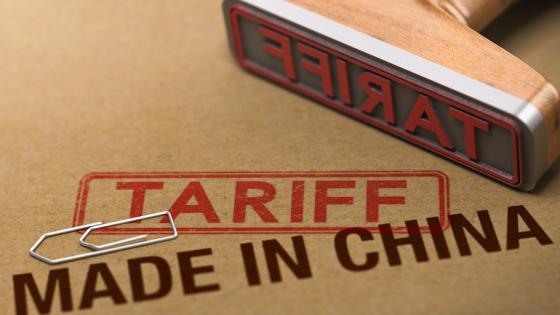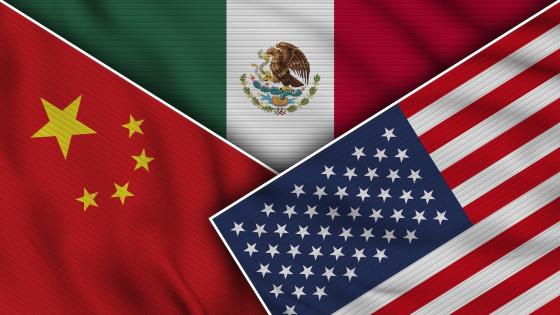The US-China trade war is more than a year old now, and there is no end in sight. Once it became clear that the dispute was more than transitory, investments started being diverted away from China, mainly to Southeast Asia (Casselman 2019). Investments into and from the US have also been affected following China’s retaliatory tariffs. There are significant costs associated with this restructuring. The move itself incurs fixed costs, some of which will be sunk. There is also the potential increase in variable costs associated with shifting production simply to avoid tariffs (rather than to improve efficiency). While the former is one-off, the latter is an on-going increase in production costs. Taken together, these costs will be substantial.
Nominal versus effective tariff rates
But how can a 25% tariff justify such a costly move? The fact that it is taking place suggests at least two factors at play, which may have been missed or misunderstood. The first relates to the difference between nominal and effective tariff rates (ETR), which crucially depends on the share of value added by US and Chinese producers.1 This distinction is particularly important given the prevalence of Chinese (and US) exports that are produced as part of global value chains (GVCs) (Blanchard 2019). After all, China is, or at least was, the assembly hub for much of the region’s manufacturing.
Whenever there is foreign value added or imported inputs, the nominal tariff has to be adjusted by a factor equal to the reciprocal of the domestic content share. To illustrate using an oft-cited example, the Fung Global Institute (2014) estimated that only about 10% of a $425 "Made in China" jacket sold in the US actually accrues to the Chinese. Therefore, unless the cost of moving production out of China was 250% ((1/0.1) x 25%) more than paying the 25% tariff, the shift would make economic sense.2 That’s ten times the margin implied by the nominal tariff rate. The same principle applies to the location of production by US firms exporting to the Chinese market, where they face retaliatory tariffs.
As the share of Chinese value-added approaches 1 or 100%, the difference between nominal and ETR approaches zero. For goods with high Chinese content, even the ETR may not justify a relocation. In these cases, transhipment may be pursued to avoid the tariff. This occurs when Chinese exports undergo minimal processing – sometimes just relabelling – in a third country and is reexported as if originating from that country. US Customs and Border Protection have already identified Vietnam, Malaysia, and the Philippines as transhipment points (Yap 2019). Although illegal, transhipments reduce, but do not eliminate, the efficiency loss due to the disruption to supply chains. The US Department of Commerce has started imposing punitive duties, on top of the tariffs, on goods it deems to have been transhipped. The more costly restructuring will likely continue.
Introducing rules of origin
These problems arise because there are no clear rules of origin specified in determining the nationality of a processed product, leaving the bill of lading as the main certification mechanism. Transhipment in particular could be reduced if a domestic content requirement, for instance, was imposed. If such a rule applied, then the ETR is zero whenever Chinese value added is below the threshold.
But what if the value-added was above the threshold? The ETR may no longer be a good proxy for relocation costs because it is only necessary now to relocate enough value added to leave the share in China just below the threshold.
Added to this is a further complication. In practice, it may not be possible to transfer just the minimum amount due to the nature of the production process or the non-divisibility of the technology employed. That is, the production technology may only allow separation of the production process (or slicing of the value chain) in discreet portions defined by tasks. For example, if the value-addition involves final assembly of the product, and this activity is defined as a single task, then it is not possible to divide it any further and it cannot be separated and undertaken in different locations.
To illustrate how these differences matter, consider a product that has 50% of its value-added in China and is being exported to the US. Without explicit rules of origin, the effective tariff is 50% ((1/0.5) x 25%), which is how much shifting all 50% of value-added out of China can raise overall costs before remaining and paying the punitive tariff becomes the cost-minimizing option. Now, assume that the US decides that only products with 30% or more value-added in China will be subject to punitive tariffs. It is no longer necessary to shift all 50% to avoid the tariff, but only the tasks that will bring Chinese value added to fall below the 30% threshold.
The exact amount will depend on the number of tasks, or the divisibility of the technology. If the technology is highly divisible, say in equal fragments of 5% of value-added, then only 25% of value-added (or five out of the ten tasks) have to be relocated to reduce it below 30% (relocating only four tasks would mean hitting the 30% threshold in China). In this instance, unless the cost of moving these five tasks out of China raises overall costs by more than 100% ((1/0.25) x 25%), it will make sense to relocate them. If the technology is less divisible such that it consists of only five tasks, each contributing one fifth of the value-addition in China, then the buffer or cost margin is lower. In this case, four out of the five tasks will have to be relocated in order to bring Chinese value-added below the 30% threshold. Costs of relocating these four tasks can only raise overall costs by less than 31.25% ((1/0.8) x 25%) or it will not happen.
Even when explicit rules of origin such as minimum domestic content criteria are not specified, notional estimates would still play a role with Customs authorities who have to determine the nationality of a product produced within GVCs. Therefore, these issues will still be relevant in deciding whether or not to shift production location to try and avoid punitive tariffs.
There is quantitative and qualitative evidence showing how the trade war has already reduced consumer welfare and disrupted GVCs. Studies such as Amiti et al. (2019) and Bellora and Fontagné (2019), and the studies cited therein, provide model-based estimates of how costly the disruption is. But some of the anecdotal evidence may point more directly to how the relocation to avoid tariffs is directly raising costs. For instance, the CEO of Home Depot estimated that while the tariffs are likely to have a “cost impact” of 2% or $2 billion worth of sales in the US market, the restructuring of production to avoid the tariff still raises cost by 1%.
It will not end with the trade war
The second reason could relate to how the current dispute is being viewed. If it is seen as a symptom of larger, underlying issues at play, such as a geopolitical struggle for global economic dominance, then it will not end here, and could recur. Chinese and other multinational corporations operating in China may continue restructuring their production in order to diversify long-term risk, if they feel that the tensions may live on beyond this dispute and find new forms of expression. We have already seen how the focus of the dispute can shift – national security, market access, currency manipulation, and intellectual property infringements have all been raised.
These two reasons – effective rather than the nominal tariff rate, and the perception that the dispute will not end with the trade war – can explain how a relatively small tariff has permanently fractured GVCs. The recent escalation in the trade war, both in terms of increases in tariffs and its greater coverage of products, suggests that the disruption will be even higher.
Déjà vu?
If any of this sounds familiar, it may be because a similar dispute took place just over 30 years ago, also triggered by a large bilateral trade imbalance, but between the US and Japan. The punishment then came in the form of a forced appreciation of the yen through the Plaza Accord. Japan responded by moving labour-intensive segments of manufacturing production to lower wage destinations in Southeast Asia, giving birth to ‘Factory Asia’ (Baldwin 2006). In the process, Japan was able to retain its export competitiveness through efficiency gains and by circumventing some of the currency revaluation effects (Athukorala and Menon 1994).
It was also able to shift a part of its export surplus to the balance of payments accounts of the countries it had invested in, thereby appearing to shrink its bilateral surplus with the US. China may try and do the same.
But there is an important difference between the two. The creation of Factory Asia benefitted consumers around the world and raised world incomes. This trade war is having the opposite effect. And the fallout could continue for a long time yet, even if the dispute ends soon.
References
Amiti, M, S Redding, and D Weinstein (2019), “The Impact of the 2018 Trade War on US Price and Welfare”, CEPR Discussion Paper no. 13564.
Athukorala, P, and J Menon (1994), “Pricing to Market Behaviour and Exchange Rate Pass-through in Japanese Exports”, Economic Journal 104 (423), 271-81.
Baldwin, R (2006), “Globalisation: The Great Unbundling (S)”, Economic Council of Finland, 20.
Bellora, C, and L Fontagné (2019), “Trade wars and global value chains: Shooting oneself in the foot”, VoxEU.org, 22 April.
Blanchard, E (2019), “Trade wars in the GVC era”, in M Crowley (ed.), Trade Wars: The Clash of Economic Systems Endangering Global Prosperity, London: CEPR Press.
Casselman, B (2019), “Trade War Starts Changing Manufacturers in Hard-to-Reverse Ways”, New York Times, 30 May.
Corden, W M (1985), Protection, Growth and Trade, Essays in International Economics, London: Basil Blackwell.
Fung Global Institute (2014), Global Supply Chains.
Ossa, R (2014), “Trade wars and trade talks with data”, American Economic Review, 104, 4104-46.
Yap, C-W (2019), “American Tariffs on China Are Being Blunted by Trade Cheats”, Wall Street Journal, 26 June.
Endnotes
[1] For a discussion on the effective rate of protection, see, for instance, Corden (1985).
[2] In this example, the $425 price includes a (unknown) retail margin, which would not have been included in the dutiable value.


